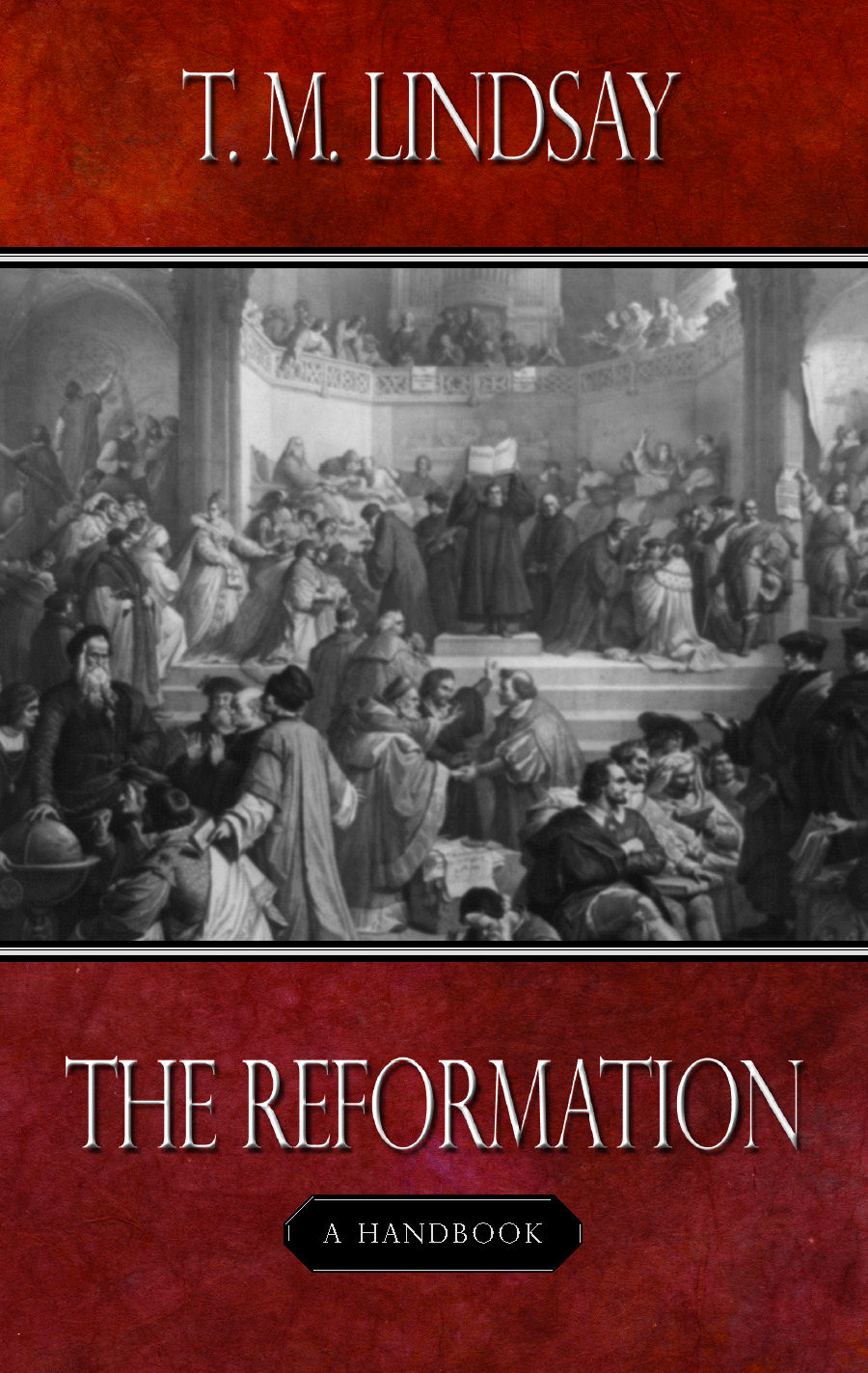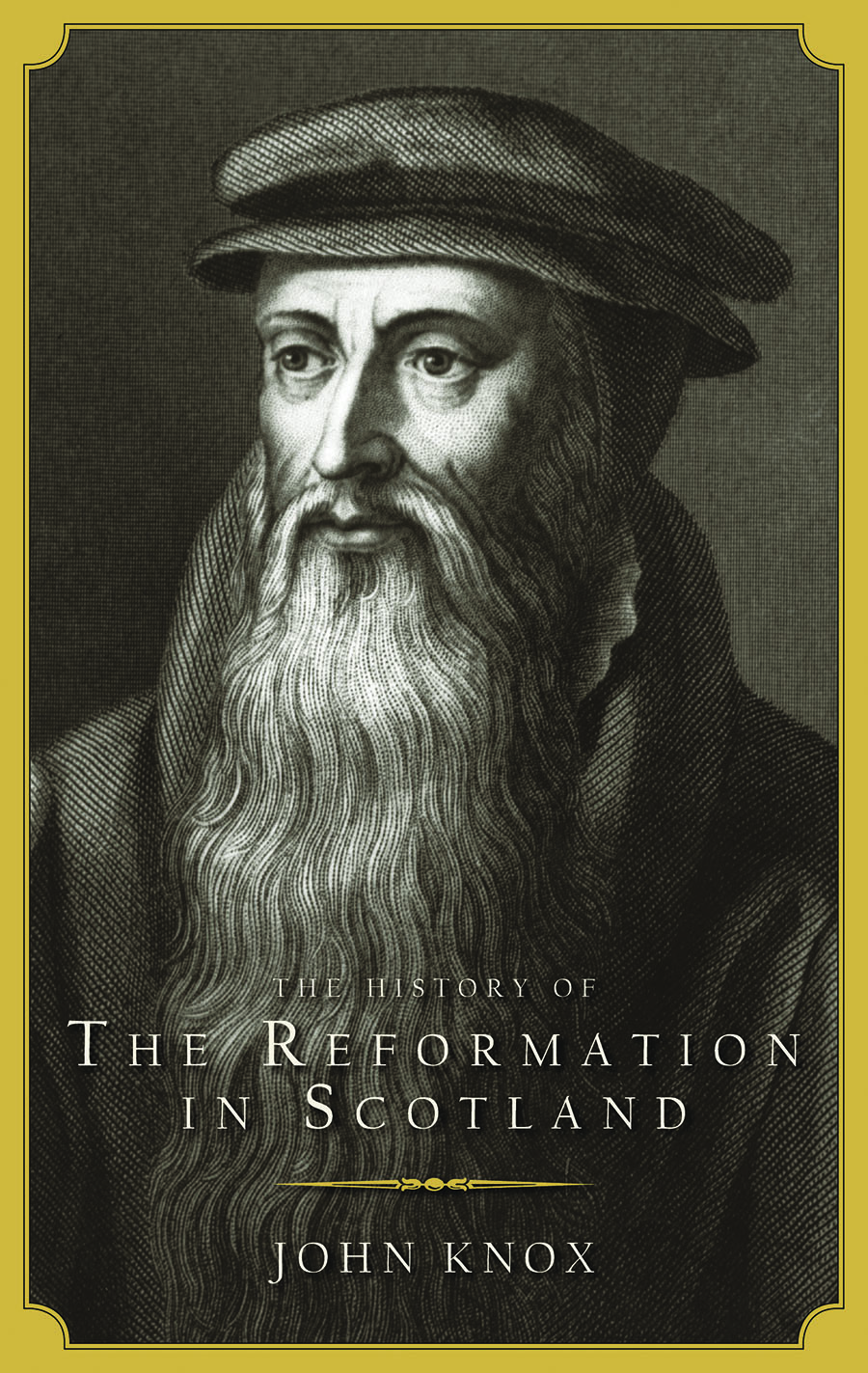Handbook on The Reformation
A review by Rev Hugh M Cartwright of T M Lindsay’s The Reformation: A Handbook, published by the Trust.[1]
Thomas Lindsay was ordained in 1872 as Professor of Church History at the Free Church College, Glasgow, where he continued until his death in 1914. Since 1902 he had been Principal of what had become the United Free College. Apart from a probationary period assisting Robert Candlish, he had no experience of pastoral ministry. His wife was a daughter of Alexander Murray Dunlop, advocate and later MP for Greenock, who drew up the Claim of Right (1842) prior to the Disruption and was legal adviser to the Free Church of Scotland. Professor D F Wright describes Lindsay’s two-volume A History of the Reformation as “one of the most substantial Scottish accounts of the Reformation, with a particular interest in its social and domestic aspects. Lindsay’s social concern was evident in his involvement in crofting agitation and with labour leaders” (Dictionary of Scottish Church History and Biography).
The book now reprinted by the Banner of Truth Trust was first published in 1882 as a Handbook for young people in Bible classes. By the time he wrote his two-volume history (1906-07) Lindsay claimed to “have read and re-read most of the original contemporary sources of information”. But he acknowledges that the first three parts of this earlier handbook are “simply a compilation from the best and most-easily accessible histories of the Reformation, and make no pretence to original treatment of the vast and complicated religious movement which they describe”. Even so, it is a skilful and useful “compilation”.
Comprehensive and easily-read narrative accounts are given (a) of the Reformation in Germany which brought the Lutheran Churches into existence, (b) of the Reformation which led to the emergence of the Reformed or Calvinistic Churches in Switzerland, France, the Netherlands and Scotland, and (c) of the Reformation in England during the reigns of Henry VIII, Edward VI, Mary and Elizabeth, which produced the Anglican Churches. On account of the area covered, the treatment is not in depth, but the pace is kept up and the reader’s attention engaged. These chapters provide a useful introduction to Reformation history, knowledge of which seems limited today even among those adhering to Reformation doctrine, principles and practice.
The fourth part of the book is a discussion of the principles of the Reformation, though it does not enter deeply into the theological issues involved. Lindsay interprets the Reformation as essentially a revival of religion, of which he sees “anticipations or antecedents” in some questionable medieval persons and movements. He considers its impact upon the political and social life of Europe. He maintains that the Reformers did not consider themselves to be forming a new Church but bringing the Church back to the biblical faith of the universal Church, separate from the usurpations and corruptions of the Pope and of Rome. He regards “the priesthood of all believers” as a key doctrinal principle of the Reformation, the leading impulse of which he sees as “the earnest desire to get near to God” – an outcome “made possible through the doctrines of Scripture and of justification by faith”.
Dr Wright notes that “Lindsay favoured a more liberal approach to confessional subscription, and also actively supported William Robertson Smith (although he affirmed biblical infallibility)”. That “he favoured biblical infallibility” is not altogether an accurate statement. Our attention has been drawn to articles in The Expositor of 1894-95, entitled “Professor W Robertson Smith’s Doctrine of Scripture” and “The Doctrine of Scripture: The Reformers and the Princeton School”.
In these articles Lindsay endeavours by specious reasoning to argue that the views of W R Smith (not those of the Princeton theologians) were in accordance with the teaching of Calvin and the Reformers and that they, like him, distinguished between the Word of God and the Scripture, asserting that “the Scripture, therefore, in the strictest sense, is not this Word of God, but the record which conveys it to us”. Lindsay explains that it was Smith’s view, with which he agrees, “that when we speak of the infallible and authoritative character of Scripture, the infallibility and authoritativeness belong primarily to the Word of God, and only secondarily to Scripture, and belong to Scripture because it is the record which contains, presents, or conveys the Word of God”. What makes the Word of God infallible to a person, he claims, is not an infallibility belonging to the Scriptures but rather the witness of the Spirit. “Infallibility does not consist in formal inerrancy at all, but in the power which compels me to know that God is through this Scripture speaking to me now as He spoke not merely by the prophets and holy men of old, but to them and in them, and giving me through them in word and picture the message of His salvation”.
It was such views of a distinction between the Word of God and Scripture that permitted men like Lindsay, Alexander Whyte and W G Blaikie to shelter the destructive critics in the nineteenth-century Free Church and vainly to believe that the concept of the infallibility and inerrancy of Scripture could be demolished and the substance of the Word of God and the gospel which it proclaimed preserved – with disastrous consequences for the Church in Scotland. While Lindsay writes in a manner which could be interpreted in keeping with this view, he does not propound it in this book.
It would be good if perusal of this volume would kindle a desire, especially among the young, for whom it was originally intended, to delve deeper into the study of the sixteenth-century Reformation movement, which has been foundational to the blessing enjoyed in connection with the gospel throughout subsequent centuries. Merle d’Aubigné’s Reformation in England [2] and John Knox’s Reformation in Scotland [3] (both published by the Banner of Truth Trust) are worth putting on one’s reading list.
Notes

The Reformation
A Handbook
price £7.75Description
A review by Rev Hugh M Cartwright of T M Lindsay’s The Reformation: A Handbook, published by the Trust.[1] Thomas Lindsay was ordained in 1872 as Professor of Church History at the Free Church College, Glasgow, where he continued until his death in 1914. Since 1902 he had been Principal of what had become the […]

price £7.00Description
A review by Rev Hugh M Cartwright of T M Lindsay’s The Reformation: A Handbook, published by the Trust.[1] Thomas Lindsay was ordained in 1872 as Professor of Church History at the Free Church College, Glasgow, where he continued until his death in 1914. Since 1902 he had been Principal of what had become the […]
Rev Hugh M Cartwright is minister of the Free Presbyterian Church in Edinburgh.
Taken with permission from the Free Presbyterian Magazine March 2007.
Latest Articles
Finished!: A Message for Easter 28 March 2024
Think about someone being selected and sent to do an especially difficult job. Some major crisis has arisen, or some massive problem needs to be tackled, and it requires the knowledge, the experience, the skill-set, the leadership that they so remarkably possess. It was like that with Jesus. Entrusted to him by God the Father […]
Every Christian a Publisher! 27 February 2024
The following article appeared in Issue 291 of the Banner Magazine, dated December 1987. ‘The Lord gave the word; great was the company of those that published it’ (Psalm 68.11) THE NEED FOR TRUTH I would like to speak to you today about the importance of the use of literature in the church, for evangelism, […]
